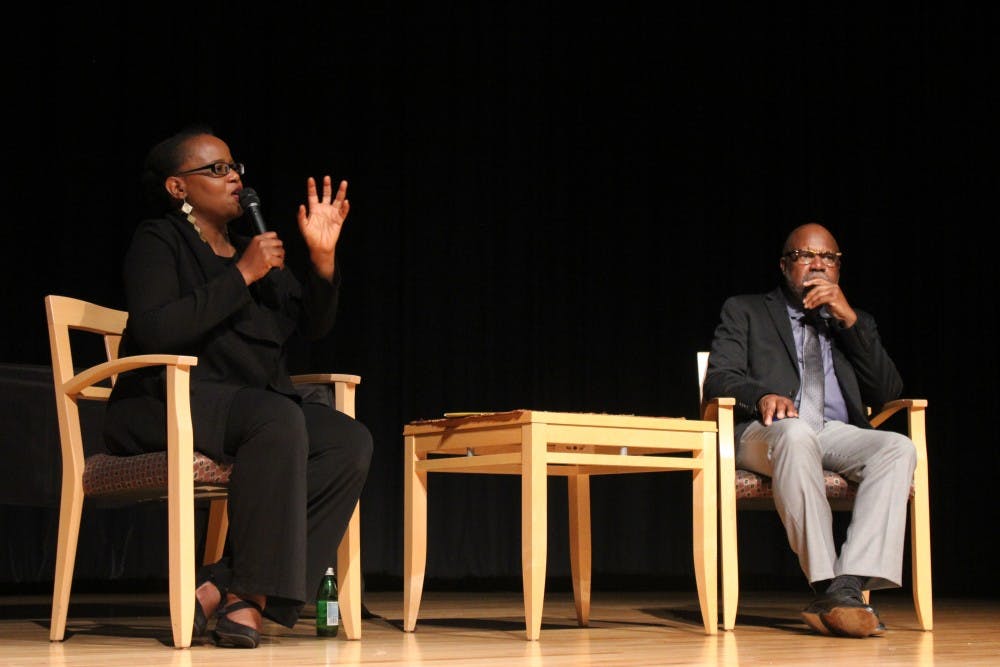Weaving a story of refugees, her own immigration from Haiti and the world today, activist and author Edwidge Danticat delivered a call for togetherness in the 25th Annual Sonja Haynes Stone Memorial Lecture.
Danticat is an award winning author and activist. While introducing Danticat, Women's and Gender Studies Professor Tanya Shields touched on Danticat's work — including novels, short stories, children’s books, essays and congressional testimony — and how she sheds light on oppression and identity through the lens of her native Haiti.
“In her work, particularly the essays in 'Create Dangerously,' Danticat explores the relationship between an immigrant artist, her birth country and her immigrant home, as well as how art illuminates history and what we can learn from injustice and catastrophe,” Shields said.
As Joseph Jordan, the director of the Stone Center, said in his welcoming remarks, the annual lecture is an opportunity for the center to recognize and honor the legacy of Sonja Haynes Stone. It's also a chance to bring the community together and have conversations that the center is known for conversations surrounding race and social justice.
Chancellor Carol Folt continued her tradition of opening the lecture with remarks about how the University is trying to adapt to a changing landscape.
“We are in the midst of great change in our society, in our university. It’s something that is the hallmark of our days,” Folt said. “We are trying to have a university that can hold sacred the open space of democracy while still sticking to its ideals and principals.”
Folt also talked about how we must be careful about the ever-growing use of stereotypes that has come with the new landscape.
“It’s a time when stereotyping is used to simplify in ways that bear little resemblance to the people they are really discussing,” she said. “But what is the most potent way to eliminate distractions and stereotypes? It’s the job of the storyteller.”
Danticat opened her lecture, which she titled “A right to be here: James Baldwin and my third culture kids," by telling a story from the summer of 2015 when she was visiting a refugee camp for Haitians on the border between Haiti and the Dominican Republic.




